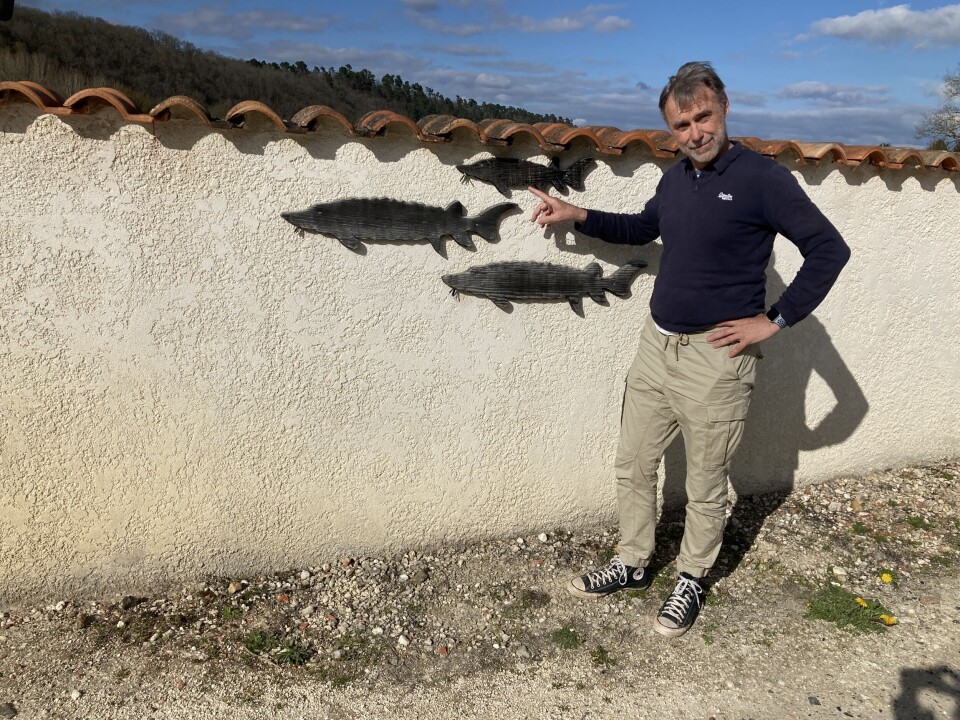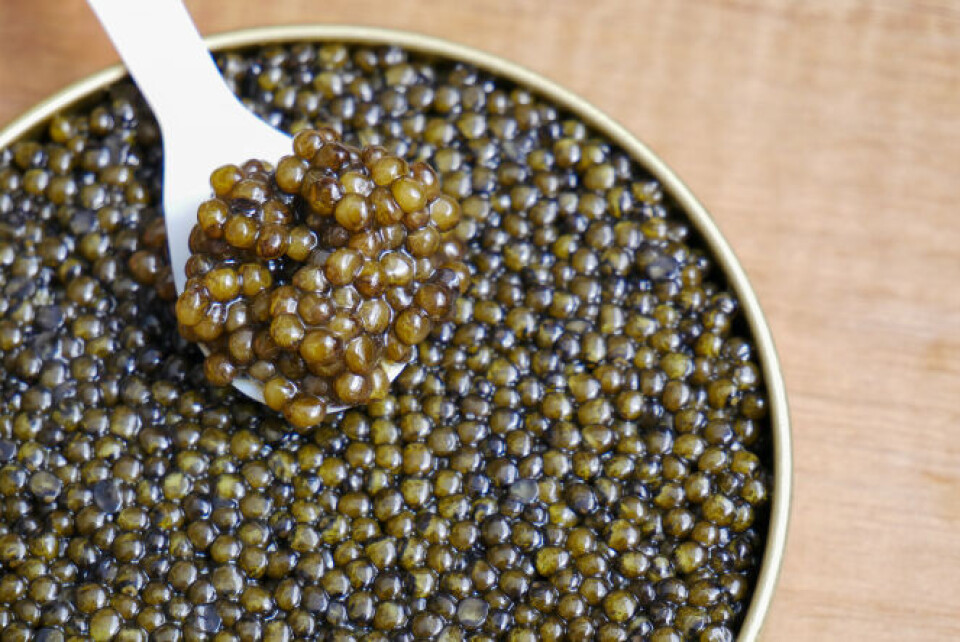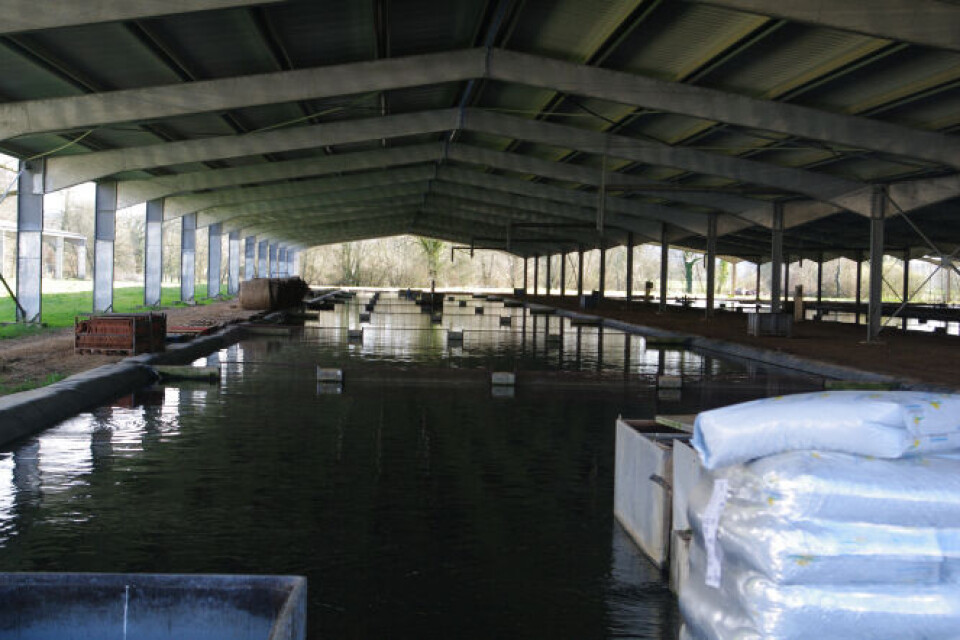-
Dordogne and Corrèze on alert for flooding on Easter Sunday and Monday
Persistent rain and thunderstorms have caused rivers to swell
-
Roadside noise cameras await approval to start issuing fines for loud vehicles in France
The devices known as meduses already exist in several cities but so far have only been ‘instructional’
-
White storks make strong return in France via nest ‘platforms’ and clipped wings
The Ligue pour la Protection des Oiseaux shares the conservation challenges in saving these birds from extinction
France recognised as a world-leader for caviar farms
The Connexion talks to Laurent Deverlanges at his caviar farm in Dordogne

French farming methods have been credited with leading the way in modern caviar production after the depletion of wild sturgeon prompted bans on fishing.
France, among the first countries to authorise sturgeon farming, now has seven sites.
The fish are killed for their eggs between seven and 10 years of age.
Mixed with salt, these become caviar, a delicacy that sells for €2,700 a kilogram.

Laurent Deverlanges, who owns the Caviar de Neuvic farm in Dordogne, told The Connexion: “France went from hardly eating any caviar to being one of the world’s biggest consumers between 1920 and 1939.
White Russians
“When so-called White Russians were kicked out of Russia by the communists, Paris became the European city with the largest and most dynamic Russian refugee community.
They brought their love of caviar, and the French quickly adopted it and have been eating it ever since.”
Wild sturgeon have been extinct in French rivers since before World War One due to overfishing, dams and changes to the ecosystem, which saw food sources, such as freshwater mussels, destroyed.
They used to be found mainly in the Gironde estuary and the Dordogne and Garonne rivers, which flow into it, as well as in smaller numbers in other French rivers flowing into the Atlantic.
This explains why six of the French farms are located in Nouvelle-Aquitaine.
Researchers first tried, unsuccessfully, to re-introduce sturgeon to the Gironde estuary in the late 1980s.
Subsequent attempts at a breeding programme failed because of difficulties reproducing both the salt water environment of the sea and the transition to freshwater, made when the fish move upriver to breed.
However, it laid the basis for raising other freshwater sturgeon, mainly originating from Lake Baikal in Russia.
These methods were developed by French researchers into reliable fish-farming processes.
Fascinated by fish since childhood
Mr Deverlanges has been fascinated by fish since childhood, an interest that inspired a degree in agricultural engineering.
After graduating, he worked around the world, including long spells in Cuba and Mozambique for agricultural and food production projects before returning to France, where he heard of the fish farm at Neuvic on the banks of the Isle river.
It had been used for trout and carp before the owner applied for authorisation to raise sturgeon.
However, he was under-financed and going through a divorce when Mr Deverlanges met him and decided to take on the project in 2011.
“Having all the paperwork was a big advantage – it is an industry where the government has very strict standards,” Mr Deverlanges said.
Fundraising
He grouped together founder shareholders from the worlds of food production, luxury goods and research for initial fundraising of €2.1million, then raised another €4.1million in 2014 to develop the Caviar de Neuvic brand.
“We have two sorts of sturgeon: one which matures at seven years, and one at 10, so we needed investors who would stay for the long term,” Mr Deverlanges said.
The business now boasts sales of €7.2million, 50 employees, and shops on-site in Neuvic, and in Paris, Bordeaux and Lyon.
It also has a restaurant in Neuvic and Bordeaux, and makes related products, including a vodka.
All the caviar is certified organic and around 15% of production is exported to 28 countries, with Japan being the main overseas customer.
150,000 sturgeon
The farm has 150,000 sturgeon raised in ponds covering 1.3 hectares of the 20-hectare site.
The main ponds measure 180m by 15m and are 1.3m deep.
They are covered, as sturgeon do not tolerate sunlight, and solar panels on the roof mean the farm produces its own electricity for its pumps, with a little bit left over for the grid.

Electric nets are now used to keep cormorants and herons out – they found ways to break through previous barriers to feast on the expensive fish.
Water flows through the ponds from the river, then through a reed bed filter before rejoining the river.
Pollution from dirty engine oil once meant the river circuit had to be shut and the emergency recycling system used for two days.
Farming methods
All the sturgeon are bred on site, with prime specimens identified and separated from the others for breeding stock.
Eggs laid by the female are mixed by hand with sperm from the males, because natural conditions, where the eggs would be stuck in clumps to rocks on the river bed, cannot be reproduced.
The young fish are kept together until three years old when they are caught and sexed using an ultrasound machine similar to those used on expectant mothers.
Male fish are separated and slaughtered for fresh fillets – sturgeon has a good texture but a bland flavour – smoked fillets, canned fish and specialities such as rillettes.
The females are kept until they reach harvesting age, then scanned again to see if their eggs have formed.
When they have, they are transferred to clear water finishing ponds before being stunned with a captive bolt gun, similar to those used on sheep, and killed.
At this stage, they are usually 1.2m long and weigh around 10kg, with the eggs accounting for 1.2kg.
All parts of the fish are used, including the swim bladder in the tip of the sturgeon’s nose, which makes fine wood glue for violin-makers, and collagen from cartilage and skin for cosmetics.
The farm had 6,000 visitors in 2022.
Prices, including a tasting, start from €21.
Related articles
Michelin star chef makes Loire France’s sustainable eating capital
French farmers in plea for help as sales of organic food fall
French mountain farmers keep herding and hospitality traditions alive
























